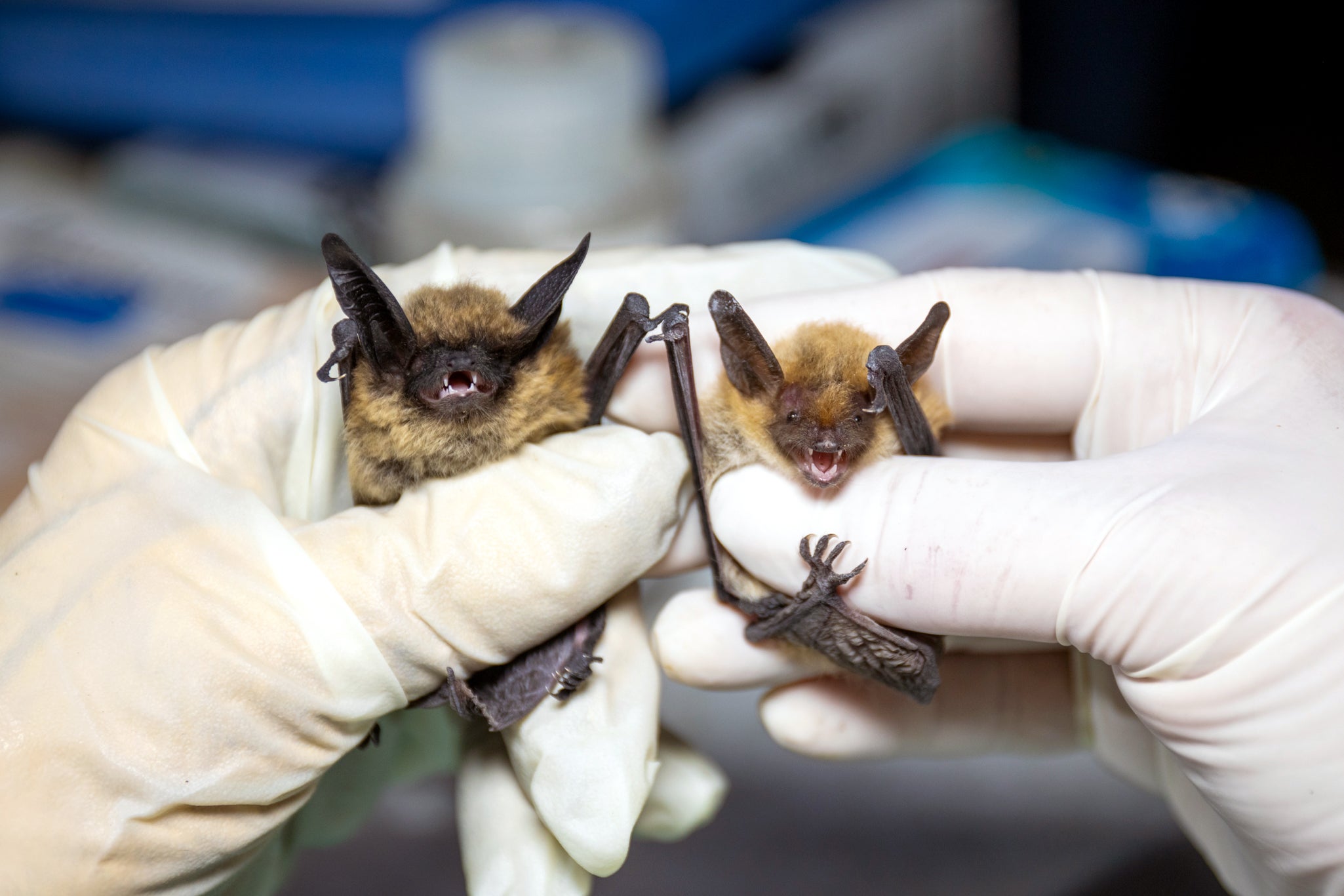Deadly fungus that killed millions of bats now found in Southern California
Bats are important for US agriculture, helping farmers by providing the equivalent of $3.7 billion worth of insect pest control
A deadly fungus that led to the death of millions of bats across North America has been detected in several counties across California, wildlife officials announced this week.
The Department of Fish and Wildlife said that the fungus was first detected last year in bats in northern Humboldt County, California, and this year was confirmed in four other northern and central counties. But inconclusive laboratory test results suggested the fungus behind “white-nose syndrome” may also be present in seven additional counties, including southern San Diego and San Bernardino.
The fungus has been detected on several species of bats in California. It was found on Western red bat for the first time in May.
While the syndrome has not yet been observed in any of the state’s 25 species of bats, officials are concerned that the presence of the fungus suggests it could attack the bats within the next few years. That’s happened in other states since the disease was discovered in 2006.
White-nose syndrome develops when the fungus, known as Pseudogymnoascus destructans, invades the bats’ skin cells. It appears as white fuzz on their faces and damages the animals’ delicate wings. Bats that are infected often end winter hibernation early, when water and food are scarce.
They become dehydrated and often die as a result.

While people can unintentionally spread the fungus through spores on clothing or shoes, there have been no reported human illnesses related to the disease.
Scientists regularly monitor bats when they emerge from hibernation each spring to test for the fungus.
Earlier this month, researchers said they’d collected bacteria and fungi from the wings of bats that could help save them from infection. The McMaster University researchers plan to refine a probiotic treatment they had developed with other partners.

“To develop a powerful probiotic cocktail that will work and will have an effect against the fungus in nature, we must understand the microbiome of the bats, or what exactly is on their wings,” said Jianping Xu, a professor in the Department of Biology at McMaster University.
Bats are important for the ecosystems, contributing approximately $3.7 billion worth of insect pest control for farmers each year. Their poop, known as guano, can also be used as fertilizer to improve soil health. Bats help keep insect populations in check and some bats are pollinators in tropical and subtropical areas of the Americas.
Join our commenting forum
Join thought-provoking conversations, follow other Independent readers and see their replies
Comments